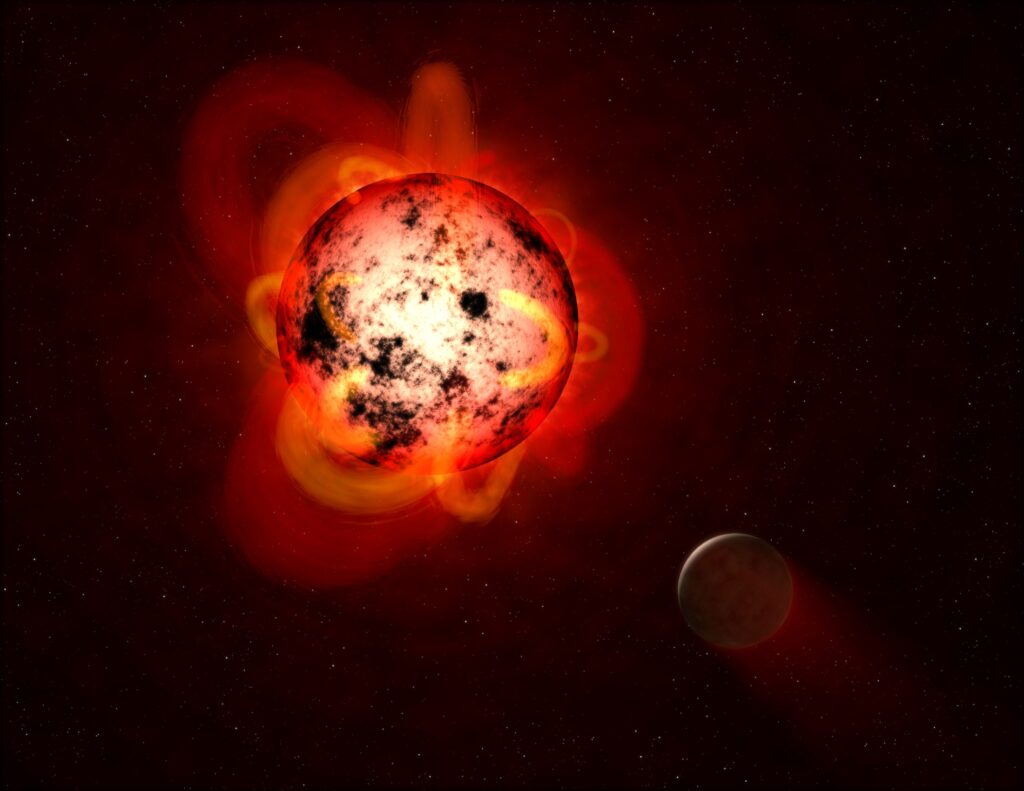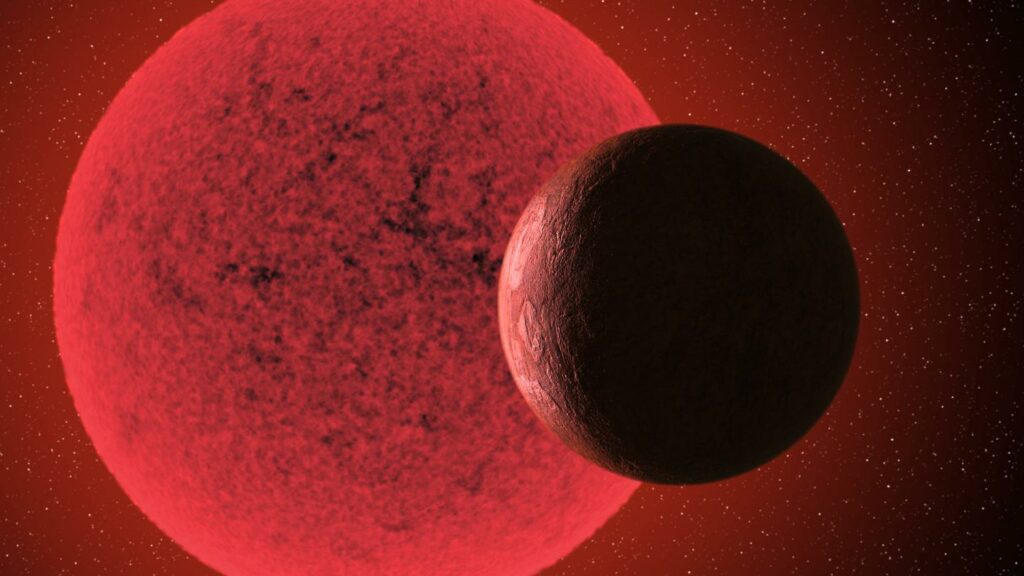An international team of astronomers has studied the super-Earth GJ 1252b orbiting a red dwarf close to the Solar system. Researchers have not been able to find traces of the atmosphere of this world. The discovery may play an important role in estimating the total number of viable exoplanets.

Most of the stars in the universe are red dwarfs. Such worlds emit much less energy than the Sun, so the habitable zone in their systems is usually located at a relatively small distance from the surface of the sun. However, this creates a problem. Although red dwarfs are noticeably dimmer than sun-like luminaries, from time to time they produce very powerful flashes. In combination with powerful stellar winds, they may be enough to eventually completely blow away the atmosphere of an Earth-like exoplanet in the habitable zone. Because of this, many scientists are quite skeptical about the chances of finding life in such systems.
Super-Earth that lost its atmosphere
An international team of researchers tried to find an answer to this question. As an object for study, they chose the exoplanet GJ 1252b. It is located at a distance of 65 light-years from Earth, its mass exceeds the mass of our planet by 1.3 times. The orbit of the exoplanet passes at a very small distance from the parent star, which is only 1.5 million km. This is thirty times less than the minimum possible distance between the Sun and Mercury. GJ 1252b makes one orbit of its star in just 12 hours.

During a series of observations, scientists measured the flow of infrared radiation of the planet from the day side of the planet. Subsequent analysis showed that its temperature exceeds 1,200 °C. Thus, gold would melt on its surface.
These data, as well as other evidence, led astronomers to the conclusion that GJ 1252b does not have a gas envelope. At the same time, in the distant past, an exoplanet may have had an atmosphere consisting of carbon dioxide. But as calculations show, even if GJ 1252b initially had 700 times more carbon than the Earth, under the influence of so much powerful radiation, the entire C02 would have completely collapsed.
Of course, due to its extreme proximity to its star, GJ 1252b has never been considered as a promising place to search for life. But the researchers note that a similar mechanism of loss of the gas envelope may be common on other worlds in red dwarfs.
According to https://www.sciencealert.com
Follow us on Twitter to get the most interesting space news in time
https://twitter.com/ust_magazine

